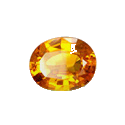Learn About Gemstones
Gemstones
Learn about gemstones and birthstones by using our Gemstone Guide.
Amethyst
Beloved for its rich purple color and association with the ancient Greek god, Bacchus, the god of wine, amethyst is a beautiful and regal looking stone. In ancient times some believed amethyst prevented drunkenness and went so far as to drink wine from vessels crafted from amethyst.
Derivations/Origins:
A member of the quartz family, the amethyst was mostly found in Russia until deposits were uncovered in South America around the turn of the twentieth century. Legends swirl around the amethyst that it keeps its wearers clear-headed and quick-witted both on the battlefield and in the boardroom.
Color/Style/Uniqueness:
Purple is generally a color associated with royalty. Ranging from a pale lilac to a rich wine color, the amethyst is nothing if not regal in appearance. There is a version of the stone found in Africa that is royal purple with reddish overtones that some experts consider to be the gem's finest example.
Birthstone Info/Rock type:
Amethyst | February
Amethyst | member of the quartz family
Citrine
Customers looking for a stone with warm color, winning looks, great wearability and a moderate price will want to consider citrine.
Derivations/Origins:
A member of the quartz family, citrine's color reflects its Latin name meaning "citron" — a fruit closely related to the lemon. Citrine is generally mined in Brazil.
Color/Style/Uniqueness:
Ranging in color from yellowish to brownish-red and sometimes orange this stone looks beautiful on its own or paired with stones of complementary colors such as amethyst, aquamarine or blue topaz. In addition to the common round and fancier shapes you'll often see in the jewelry counter, citrine can also be found in more unusual cuts or carvings thus making it a good choice for a unique and personal piece.
Birthstone Info/Rock type:
Citrine | November (topaz is other)
Citrine | member of the quartz family
Diamond
The diamond is one of nature's most amazing and beautiful creations. Natural diamonds are created deep within the earth over a span of billions of years.
Derivations/Origins:
Said to symbolize strength, the diamond is named for the Greek word, "adamastos" meaning "invincible". It is the hardest gem and can only be cut by another diamond. Worn as a symbol of romantic love, diamonds also represent status and wealth.
Color/Style/Uniqueness:
Diamond is the only gem made up of one single element - carbon. It is typically 99.95% carbon and .05% trace elements which are atoms that are not part of the diamond's essential chemistry. Those trace elements might affect the diamond's color.
Birthstone Info/Rock type:
Diamond | April
Emerald
There are other green gems, but emerald is the one associated with the deepest, richest green. Legends told of the emerald's ability to reveal truth and protect against evil spells.
Derivations/Origins:
Originally mined in Egypt and now more frequently in Colombia, the emerald name comes from the ancient Greek word "smaragdus" meaning green. Cleopatra fancied emeralds and adorned herself with them.
Color/Style/Uniqueness:
A deep green, these rare gems are often carved into a rectangular step cut, which is known as the emerald cut. You can find smaller stones carved into other shapes such as round, oval or marquise. Emeralds usually have inclusions.
Birthstone Info/Rock type:
Emerald | May
Emerald | member of the beryl family. Aquamarine and morganite are also beryl.
Garnet
There are many different species of stones within the garnet family. Almandite, demantoid, hessonite, malaya, pyrope, rhodolite, spessartite and tsavorite are all stones in the garnet family tree.
Derivations/Origins:
Almandite: Almandite gets its name from an ancient Asian hotbed of gemstone and fashion trading: the town of Alabanda. This red stone was said to have lit the course, attached to the bow of Noah's ark after he recognized its "inner fire" as a superior light source.
Demantoid: Discovered in the Russian Ural Mountains in 1868, this garnet was marketed by Tiffany and Company as an attractive alternative to the emerald.
Hessonite: A close relative of the tsavorite garnet, the hessonite originally came from Sri Lanka.
Malaya: Discovered in 1960s East Africa, the malaya garnet was born of a chemical mixture of the two garnets, pyrope and spessartite. Its peppy and bright colors created a small and strong US market in the 1980s.
Pyrope: Greeks and Romans valued the pyrope; the Greek word pyropos means "fiery-eyed" and perfectly describes the lavish red color of this garnet. This was also a popular stone in Victorian era jewelry.
Rhodolite: The two Greek words that impart the name of this garnet: rhodon ("rose") and lithos ("stone") speak to its beautiful color.
Spessartite: Spessart, Germany was once a prominent source for this gem and hence became its namesake.
Tsavorite: Discovered in Kenya in the 1970s, Tiffany and Company made this gem a popular seller in the US market.
Color/Style/Uniqueness:
The most familiar member of the garnet family is almandite, bearing a red or reddish-purple to orangey hue. Demantoid is a garnet with a green to yellowish-green color. It also carries inclusions known as "horse tails"; wispy and fiber-like, that branch out from a central point. Often called "cinnamon stone", hessonite has warm, brownish hues including oranges, yellows and reds. The malaya garnet projects the perky colors of light to dark pinks, reds and yellowish-orange. The pyrope garnet is typically a brilliant red but also comes in medium to dark reddish-orange or purplish- red. Actually a mixture of almandite and pyrope, rhodolite is known for its dark purplish-red or reddish-purple color. Spessartite is a different looking garnet usually found in a bright orange to dark yellowish or reddish-orange color. Tsavorite is usually an explosive green or yellowish- green stone, intense in its color.
Birthstone Info/Rock type:
Garnet (all varieties) | January
Garnet | A family of closely related mineral species, all garnets have the same basic crystal structure but vary in chemical composition.
Peridot
Hailed as the "gem of the sun" by ancient Egyptians, the peridot is a transparent stone with a yellowish-green hue.
Derivations/Origins:
Mined by the ancient Egyptians on the Red Sea island of Zabargad, the peridot was believe to protect its wearer from "terrors of the night." Most peridot are formed deep inside the ground and have been brought to the surface by the force of volcanoes. In very rare circumstances, peridot can be extraterrestrial, being found in meteorites that have fallen to earth.
Color/Style/Uniqueness:
Peridot is found in a narrow range of colors, from the most popular yellowish-green to brown-green and pure green.
Birthstone Info/Rock type:
Peridot | August
Peridot | gem variety of the mineral olivine
Ruby
Ruby is the most valuable of the gemstones in the corundum family of minerals, which also includes sapphire. Chromium is the element that gives ruby its rich red color.
Derivations/Origins:
Rubies are mentioned in the Bible and associated with the traits of beauty and wisdom. In ancient Sanskrit it is "the king of precious stones." Rubies of the finest quality come from Myanmar (formerly Burma).
Color/Style/Uniqueness:
The name comes from "ruber" - the Latin word for red. Many are drawn to the rich red color of ruby as it symbolises passion and wealth.
Birthstone Info/Rock type:
Ruby | July
Ruby | Member of the corundum family
Sapphire
A gem long-associated with romance and royalty, Princess Diana received a blue sapphire and diamond engagement ring from Prince Charles in 1981.
Derivations/Origins:
Ancient Greek royalty claimed the sapphire was a protector from envy and harm. In the Middle Ages clergy often wore sapphires to symbolize Heaven and the people believed it brought heavenly blessings.
Color/Style/Uniqueness:
Sapphires are made of corundum and are found in nature in a rainbow of colors, not just blue. Natural sapphires can be orange, yellow, green, purple, pink and many hues in between. Red sapphires are classified as ruby. When translucent or opaque, a sapphire will sometimes be cut into a cabachon, which is a stone that is polished instead of faceted and has a smooth round top.
Birthstone Info/Rock type:
Sapphire | September
Sapphire | Member of the corundum family
Topaz
Topaz is named for the old Greek island Topazios but ironically was never sourced from there. In the 19th century, the Ural Mountains in Russia was the biggest source of topaz.
Derivations/Origins:
The ancient Greeks believed strength was bestowed upon the wearer of topaz. During the Renaissance topaz was believed to calm anger and in India people thought topaz brought long life if worn above the heart.
Color/Style/Uniqueness:
Topaz comes in a range of many colors including blue, pink, orange, purple and brown, which is the stone often called "smoky quartz." The popular blue topaz color is most often the result of treatment and is hardly ever its natural color. Sherry topaz, named after sherry wine is yellowish-brown to orange, and is often called precious topaz.
Birthstone Info/Rock type:
Topaz | November - Precious Topaz (Citrine is the other)
Blue Topaz | December
Turquoise
Turquoise, prized for its bright blue color, is only found where the right dry conditions exist. The source for the finest robins-egg blue stones is a district of Iran, formerly Persia. Turquoise found in Egyptian tombs is the oldest known jewelry.
Derivations/Origins:
The name "Turquoise" has a French origin. From the expression, "pierre tourques" which means "Turkish stone," turquoise probably came to Europe from Turkish sources. In Tibet, turquoise is considered to bring health, good fortune and protection from evil.
Color/Style/Uniqueness:
Colors of turquoise range from medium sky blue to greenish blues and even dull greens. It is often carved due to it's relative softness, and is made into beads or flat pieces to be used in jewelry. Turquoise often has brown markings that look like veins or splotches. These are remnants of the rock where it grew and these markings are called matrix. Most people favor turquoise without matrix, which is more rare and therefore higher in price.
Birthstone Info/Rock type:
Turquoise | December (the other is blue topaz)










